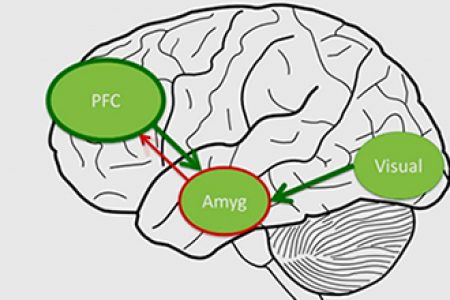The Horrors of Halloween: Trick or Treat?
Falling leaves, days getting darker: the end of October is approaching! While some people prefer to stay warm by the fire, there are others who would rather go out in search of a good scare during Halloween. But why do some people enjoy being scared silly?
Halloween has been a period of celebration for hundreds of years, and it has always been associated with dressing up and ghosts. In many cultures it is believed that on October 31st the border between the world of the living and the world of the dead is opened, and therefore the spirits of the deceased can easily cross over into our world. Modern Halloween celebrations still encompass an allusion to ghosts and other unworldly creatures, as every year many people plan a visit to a “Fright Night” in their local theme park. During Fright Night, theme park employees dress up and try to scare the visitors, who can also enjoy a ride through a haunted house or visit various other frightening attractions. Great fun for some, but the worst nightmare of others.
Sensation-seeking
But how come some people actually enjoy being scared? A possible explanation could have to do with a preference for sensation-seeking. In the 1960s, Zuckerman and colleagues conducted an experiment into sensory deprivation. They soon realized that those who were most eager to participate were young males, who also engaged in risky behaviors. A questionnaire was developed to find out what made these young men different from the other participants, and it was concluded that these men had scored high on sensation-seeking, a temperamental trait that determines whether we enjoy new and exciting experiences. So if you enjoy new experiences and adventures, and are always on the lookout for a new thrill, you could very well be a sensation-seeker!
Optimal level of arousal
Closely related to the concept of sensation-seeking is the theory of “optimal level of arousal”. This theory states that every individual has their own personal optimal level of arousal, which leads to a state of physical and mental well-being. If you receive too many stimuli, you may feel overstimulated and get stressed. On the other hand, if you are exposed to too little stimulation, you will experience understimulation, which can also lead to stress! It is thought that sensation-seekers have a higher optimal level of arousal than those low on sensation-seeking traits. In other words, sensation-seekers seem to need more stimulation from their environment to feel good. But is this also related to a preference for situations that might scare us?
Preference for scary movies
One way to answer this question is to use neuroimaging techniques that can show what happens in our brain when we experience a specific situation. A recent study was conducted to investigate what happens in the brain when we watch scary or neutral video clips. Participants were shown these video clips while in an MRI scanner. The researchers found that all participants showed activity in the anterior cingulate cortex and anterior insula when watching scary video clips. These brain areas play an important role in emotional processing, which indicates that all participants were more affected by a scary video clip than a neutral video clip. As a next step, those participants that had scored high on sensation-seeking were compared to the low sensation-seekers. It was revealed that the high sensation-seekers actually showed underactivation in these same brain areas when they were watching neutral video clips, and high activation when they were watching scary video clips.
So yes, it seems that for sensation-seekers one way to reach their optimal level of arousal is by watching scary movies, or getting scared at Fright Night at Halloween. For those who prefer otherwise: stay in, go trick-or-treating, or dress up for a fun Halloween party to reach your own level of optimal arousal. Happy Halloween!





